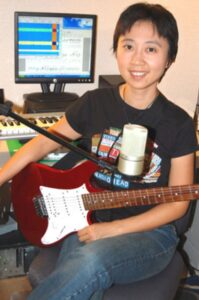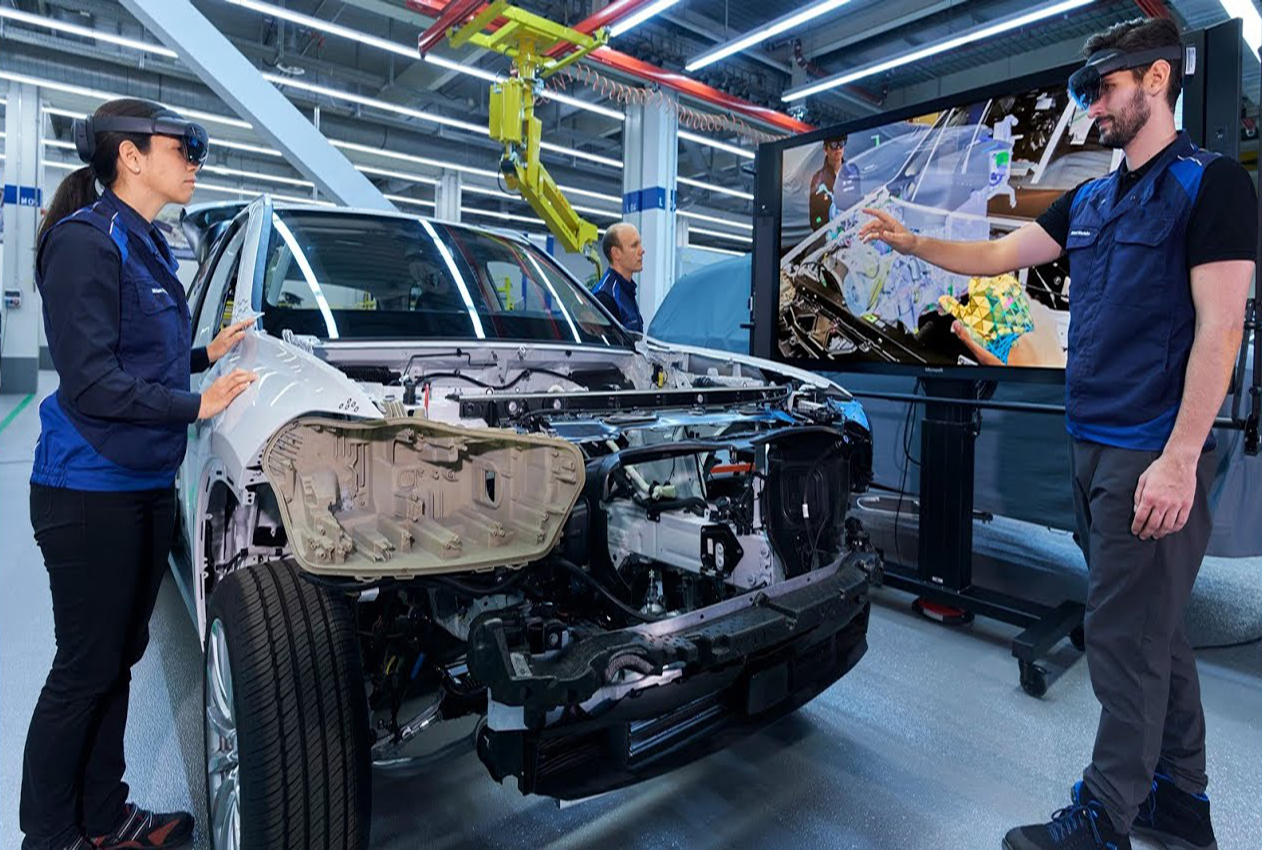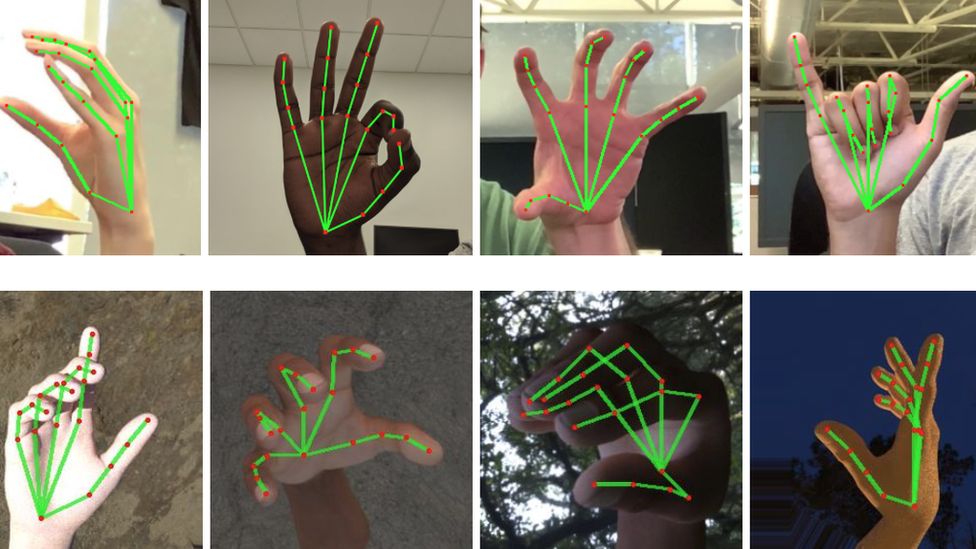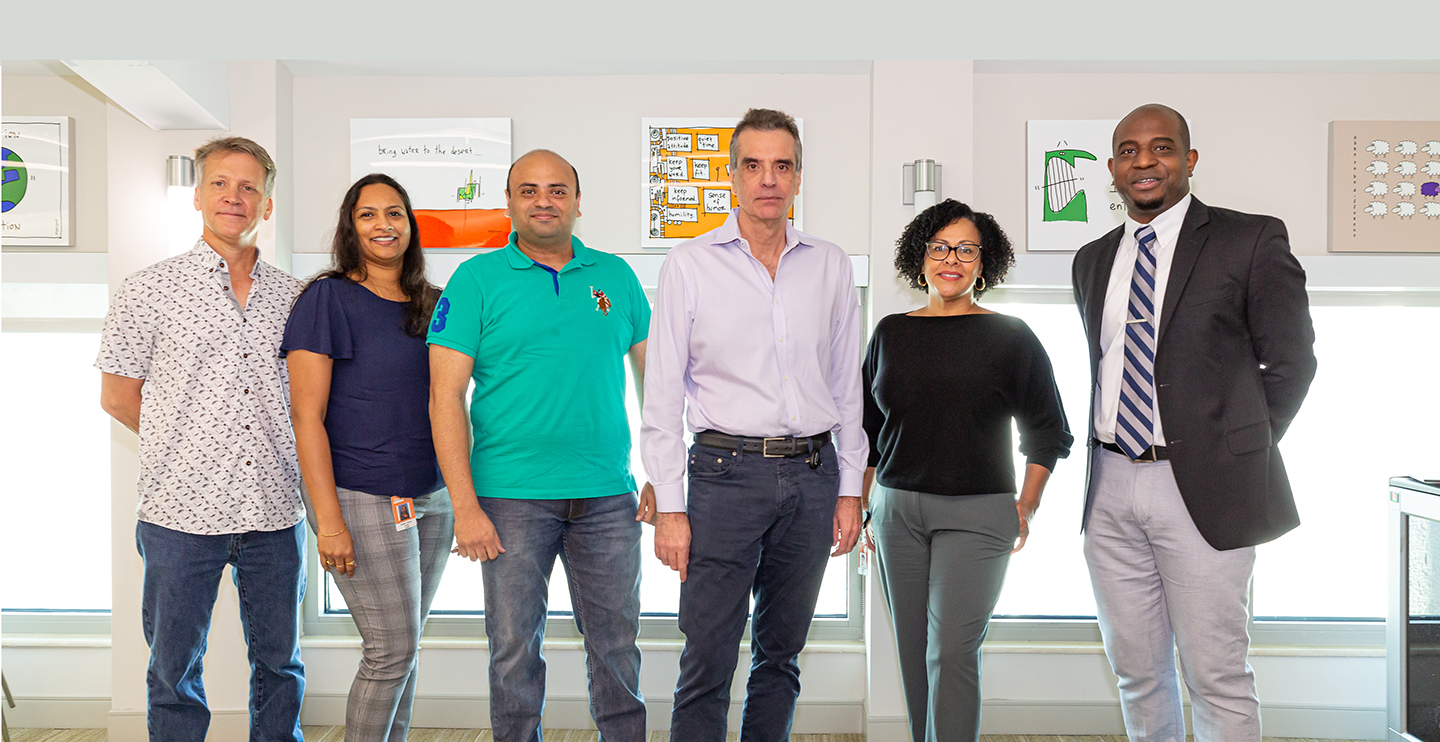The analytical side of Ching-Hua Chuan’s brain led her to leave her native Taiwan to study computer science in the U.S. But it was the artistic side of her brain that helped her discover where she would fit into that massive field of study.
 Chuan convinced her mother to buy her a guitar when she was 12. By the time she was in college, she was playing in all-female bands like “Good Citizen,” banging her head while playing “Zombie” by the Cranberries, and carefully strumming her acoustic guitar on folk songs. Then one day, as a Ph.D. student at the University of Southern California far from her bandmates back home, Chuan had an idea. What if she could train a computer to create her own band? Rather than simply identify or play back songs already in existence, Chuan wondered if she could teach a computer how a specific musician played and then create new music in the same style.
Chuan convinced her mother to buy her a guitar when she was 12. By the time she was in college, she was playing in all-female bands like “Good Citizen,” banging her head while playing “Zombie” by the Cranberries, and carefully strumming her acoustic guitar on folk songs. Then one day, as a Ph.D. student at the University of Southern California far from her bandmates back home, Chuan had an idea. What if she could train a computer to create her own band? Rather than simply identify or play back songs already in existence, Chuan wondered if she could teach a computer how a specific musician played and then create new music in the same style.
Chuan, now as assistant professor at the University of Miami, explained: “In the beginning, I was totally selfish. I built that system for myself.” But that work ended up impressing her advisers so much that it became the focus of her Ph.D. dissertation. The program was capable of learning chord progressions, rhythmic patterns, and specific keys used by different musicians. The ultimate goal was to teach a computer how a particular piece of music feels to a human and recreate that feeling.
“I analyze music from a human’s perspective,” said Chuan, who dedicated her dissertation to her mother. “Even if you don’t have formal musical training, you can feel, ‘This song sounds happy.’ Those are the things that we humans process very naturally. Those are the things we want to study.”
That work launched Chuan on a career studying “human-centered computing,” where she hopes to serve as a bridge between the technical world of artificial intelligence (AI) and the very human world of its users and those who are impacted by the technology. Chuan has been an assistant professor in the Department of Interactive Media of the University of Miami’s School of Communication since 2021, but her goal of finding the humanity in AI helped her land a joint appointment with the Frost Institute for Data Science & Computing starting this fall.
 Kim Grinfeder, director of Creative Technologies and the XR Initiative at IDSC, said Chuan’s interdisciplinary culture, her pioneering work in multiple fields, and her superior computational skills, make her an ideal addition to IDSC. “IDSC’s focus on Human-Centered Computing, mirroring Dr. Chuan’s interests in AI, intelligent agents, and human-machine communication, provides an alignment that fosters scholarly growth,” Grinfeder said.
Kim Grinfeder, director of Creative Technologies and the XR Initiative at IDSC, said Chuan’s interdisciplinary culture, her pioneering work in multiple fields, and her superior computational skills, make her an ideal addition to IDSC. “IDSC’s focus on Human-Centered Computing, mirroring Dr. Chuan’s interests in AI, intelligent agents, and human-machine communication, provides an alignment that fosters scholarly growth,” Grinfeder said.
IDSC Director Nick Tsinoremas said those skills will allow Chuan to serve as a bridge between several IDSC programs from Human Centered Design and Computing to Data Ethics to AI and Machine Learning. “I am extremely excited to welcome Ching-Hua into the faculty at IDSC. Her research in explainable AI and generative AI for social good brings tremendous expertise while addressing real-world problems in the current fast-moving space of AI and its role in our society,” Tsinoremas said.
Chuan views her role at IDSC as that of an artificial intelligence advocate, using the skills she’s learned to translate the power of AI for non-experts. AI has long been the stuff of science fiction and theoretical research, but over the past year, text and image generators have brought AI into the mainstream. That AI revolution also has led to countless questions about the power of AI and the ethics of deploying it. Chuan is a loud critic of AI technologies that can cause harm, but she doesn’t want the fear of the unknown stifling this critical field of research.
“There is a huge gap between
people who know the technology
and the general population who don’t.
I want to close that gap.”
“There is a huge gap between people who know the technology and the general population who don’t. I want to close that gap,” she said. “I want to translate from the technical perspective and translate that into something that people understand, to empower the community, to not be afraid of this technology but to take advantage of this technology.”
Her career provides a glimpse into what that can mean. Chuan has helped design systems that are more useful, and friendly, to their human users. For example, she created AI-powered Extended Reality (XR) training systems that can facilitate various assembly tasks, such as showing new automobile factory workers how to do their jobs. This XR application allowed workers to “see” what they were supposed to do rather than simply reading each step in a manual. Distinct from prior XR training systems that simply shut down when people made a mistake or skipped a step, Chuan added AI to the system so that it corrects errors, reminds users of missed steps, and serves as more of a teacher than a static manual.

Chuan has also studied the interactions between humans and chatbots to see how they can be more useful to people. There, she realized that humans weren’t satisfied even when the chatbot’s responses were accurate and helpful because people also have emotional needs. For instance, sometimes angry customers just wanted someone to vent to. However, when communicating with a chatbot, “You don’t feel like, ‘Finally somebody understands my issue,’” she said. Based on her studies on medical chatbots, Chuan found that “empathetic” chatbots were quite helpful. And there’s a level of stereotyping that humans prefer the female persona for “customer service” or “empathetic” chatbots. “You think about Siri, Alexa, they are female voices,” she said.

In all of her research, that human-centered approach is always key. She has continued studying how humans react to music to better train computers to “perceive” the same way. She has worked on programs that help users learn American Sign Language via interactive games. And she has studied how advancements in AI have been portrayed in news articles to gauge how the public is being informed of the fast-moving developments.
Now with her formal appointment with IDSC, Chuan is eager to see what comes next. The Institute has long pushed an interdisciplinary approach, urging researchers to collaborate with new scientists in different fields to see what develops.
“That’s what I appreciate the most about IDSC and UM,” Chuan said. “There are a lot of opportunities to work together. I’m excited about that.”
Story by Alan R. Gomez
Tags: AI and Music, American Sign Language, Ching-Hua Chuan, Creative Technologies, Kim Grinfeder, XR



